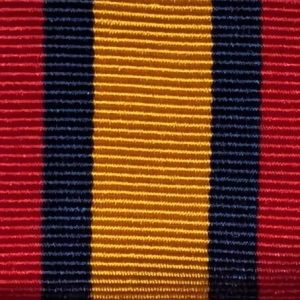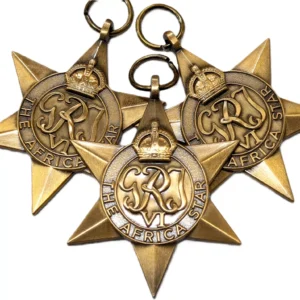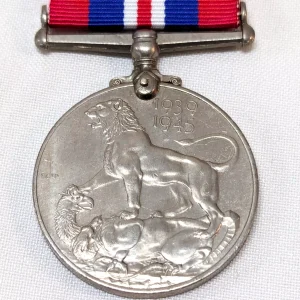SOLD

92ND PUNJABIS 1908 BRITISH INDIA ARMY GENERAL SERVICE MEDAL 3 BAR WW1 WW2 BURMA 1930-32, WAZIRISTAN 1919-21 & AFGHANISTAN N.W.F. 1919
Offered is a India General Service Medal with 3 clasps Afghanistan 1919, Waziristan 1921-24 & BURMA 1930-32. Impressed named to 2686 SEPOY ALAM DIN, 92/PUNJABIS. Note: The Burma 1930-32 clasp is not commonly seen, being very good in combination with the other two more common clasps. The 92nd Punjabi Regiment was raised on 1 January 1800 at Madura as the 2nd Battalion 16th Regiment of Madras Native Infantry by Lieutenant Colonel Alexander Dyce and was known as Dyce ki Paltan (Dyce’s Battalion). It was composed mostly of Muslims, Tamils and Telugus. In 1801, it took part in suppressing a rebellion of the Poligars (local feudal chieftains) of Madura and Tinnevelly in South India. In 1809, it took part in the Travancore War and in 1824, it participated in the First Anglo-Burmese War. The same year, it was redesignated as the 32nd Regiment of Madras Native Infantry. During the Great Indian Rebellion of 1857, it operated in Central India. In 1890, the 32nd Madras Infantry was reconstituted with Punjabi Muslims and Sikhs, and permanently based in Burma. Its designation was changed to 4th Regiment of Burma Infantry, and in 1891, to 32nd Regiment (4th Burma Battalion) of Madras Infantry. In 1901, […]
$355.00
SOLD
Offered is a India General Service Medal with 3 clasps Afghanistan 1919, Waziristan 1921-24 & BURMA 1930-32. Impressed named to 2686 SEPOY ALAM DIN, 92/PUNJABIS.
Note: The Burma 1930-32 clasp is not commonly seen, being very good in combination with the other two more common clasps.
The 92nd Punjabi Regiment was raised on 1 January 1800 at Madura as the 2nd Battalion 16th Regiment of Madras Native Infantry by Lieutenant Colonel Alexander Dyce and was known as Dyce ki Paltan (Dyce's Battalion). It was composed mostly of Muslims, Tamils and Telugus. In 1801, it took part in suppressing a rebellion of the Poligars (local feudal chieftains) of Madura and Tinnevelly in South India. In 1809, it took part in the Travancore War and in 1824, it participated in the First Anglo-Burmese War. The same year, it was redesignated as the 32nd Regiment of Madras Native Infantry. During the Great Indian Rebellion of 1857, it operated in Central India.
In 1890, the 32nd Madras Infantry was reconstituted with Punjabi Muslims and Sikhs, and permanently based in Burma. Its designation was changed to 4th Regiment of Burma Infantry, and in 1891, to 32nd Regiment (4th Burma Battalion) of Madras Infantry. In 1901, its title was changed to 32nd Burma Infantry. The Burma Battalions were special units raised to police the new territories acquired in the Third Anglo-Burmese War and pacify the rebellious hill tribes inhabiting the frontier regions of Burma. In 1890 and 1894, the regiment operated in the Shan States, where it repulsed an incursion by the French. In 1891, it operated in the Chin Hills against recalcitrant hill tribes.
Subsequent to the reforms brought about in the Indian Army by Lord Kitchener in 1903, all former Madras units had 60 added to their numbers. Consequently, the regiment's designation was changed to 92nd Punjabis. In 1910, Major General ES Hastings, CB, DSO, who had commanded the regiment from 1891 to 1907, was appointed the Colonel of 92nd Punjabis. In 1910, the Burma Battalions were delocalized from Burma and in 1913, the 92nd Punjabis moved to Benares in India.
On the outbreak of the First World War, the 92nd Punjabis sailed for Egypt in November 1914, where they defended the Suez Canal against the Turkish attack in February 1915. Moving to Mesopotamia in December 1915, they were engaged in fierce fighting on the Tigris Front, as the British made desperate efforts to raise the Siege of Kut al Amara, and later, during the British advance northwards. The regiment took part in the Battles of Sheikh Sa'ad, the Wadi, Hanna, the three Battles of Sannaiyat, and the Actions of Shawa Khan, Istabulat, Daur and Tikrit. It fought with great gallantry and suffered grievous losses in the long and bloody campaign. In 1918, the 92nd Punjabis proceeded to Palestine and took part in the Battle of Megiddo, which led to the annihilation of Turkish Army in Palestine.92nd Punjabis in the trenches. Mesopotamia, c. 1916.During the war, the 92nd Punjabis suffered 1591 casualties including 271 killed. For their exceptional bravery and excellent performance in the war, the 92nd Punjabis were made Prince of Wales's Own and on 1 January 1922, Edward, the Prince of Wales was gazetted as their Colonel-in-Chief.
Clasp Afghanistan 1919:
The Third Anglo-Afghan War, also known as the British-Afghan war of 1919 and in Afghanistan as the War of Independence, began on 6/5/1919 when the Emirate of Afghanistan invaded British India and ended with an armistice on 8/8/1919.
Casualties during the conflict amounted to approximately 1,000 Afghans killed in action, while the British and Indian forces lost 236 killed in action. In addition, 615 were wounded, 566 died from cholera, and 334 died as a result of other diseases and accidents.
Clasp Waziristan 1919 - 24:
A large number of troops were employed in small garrison over a large area during this campaign.
Clasp Burma 1930-32
Awarded to troops stationed and brought in to quell the local uprisings in Burma in December 1930 and which continued throughout 1931 and into 1932.
Additional information
| Weight | 1 kg |
|---|---|
| Dimensions | 39 × 15 × 10 cm |



